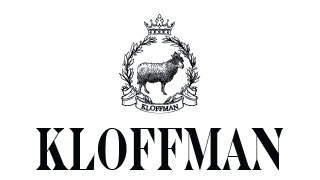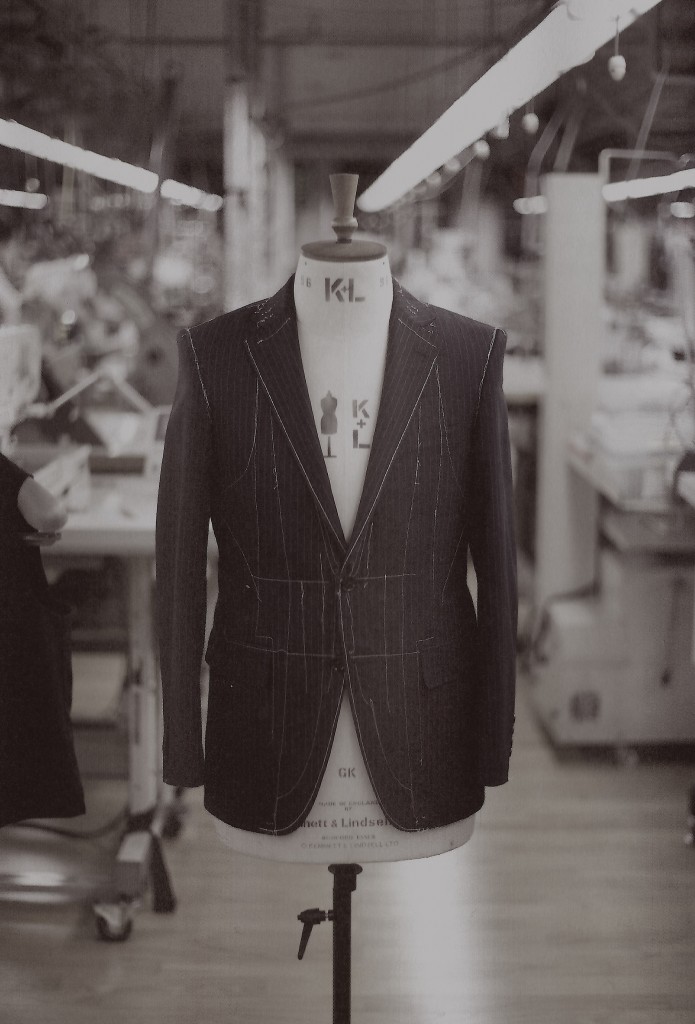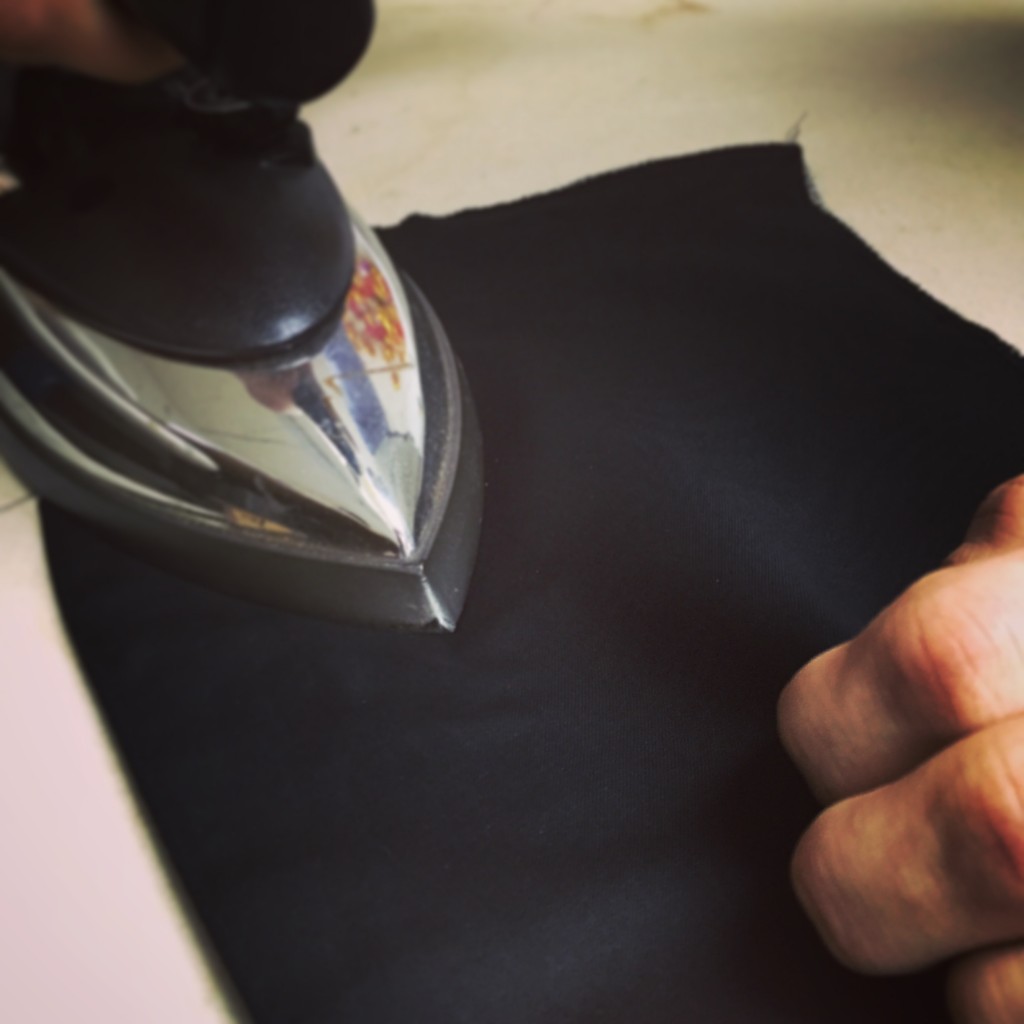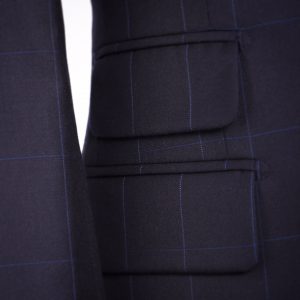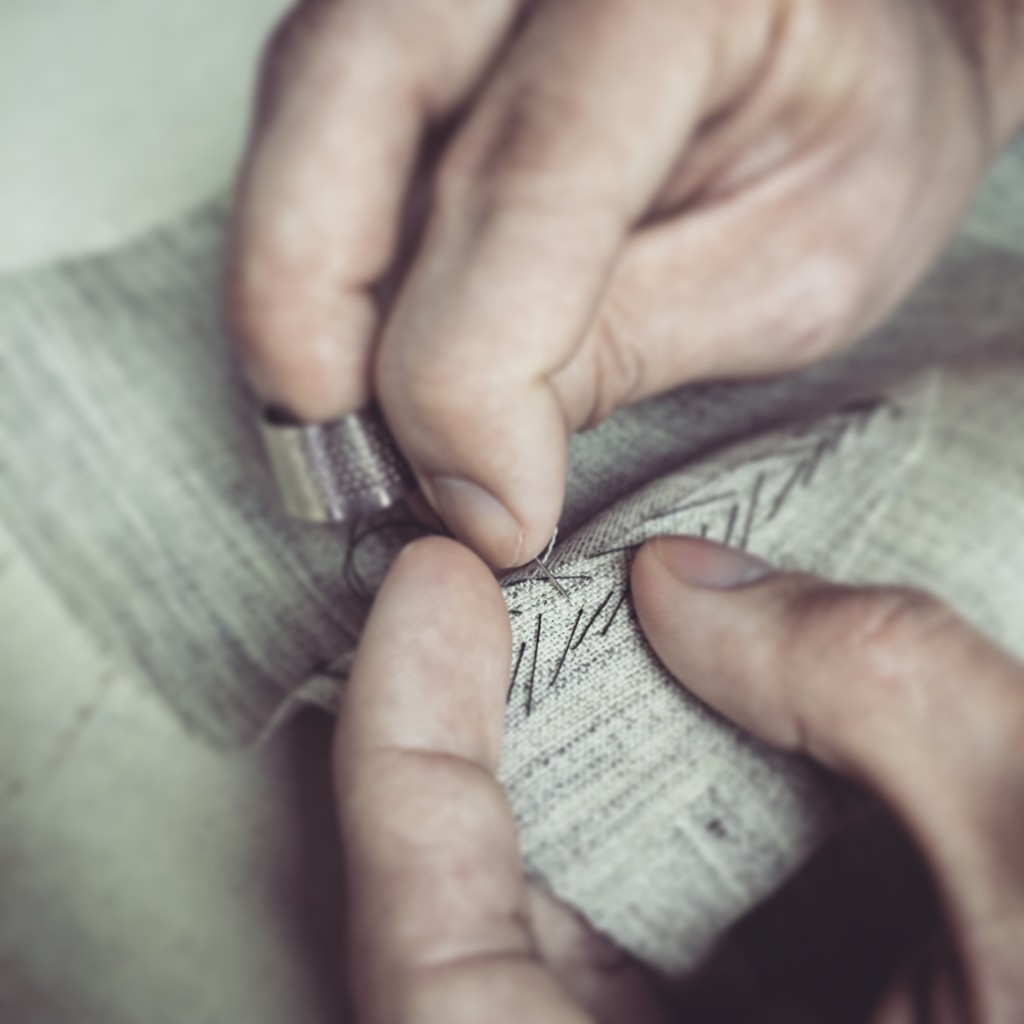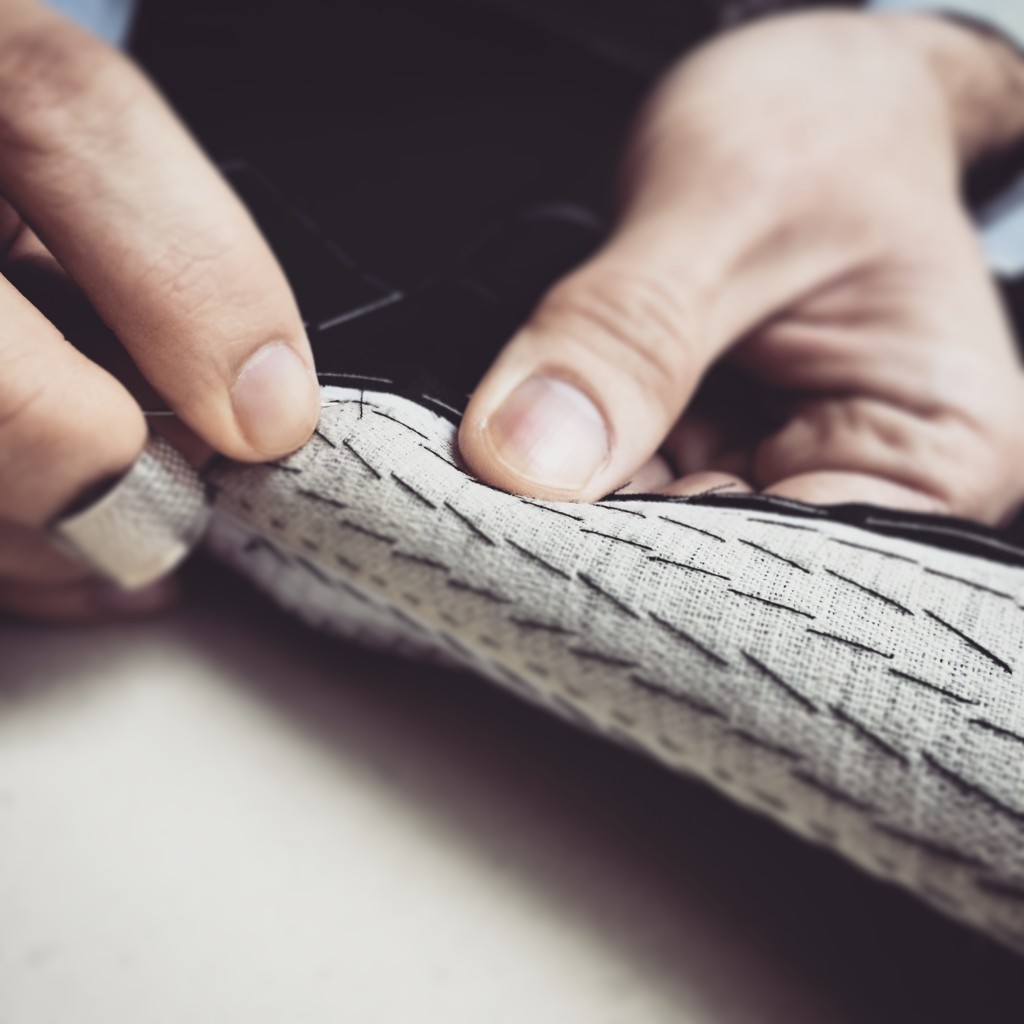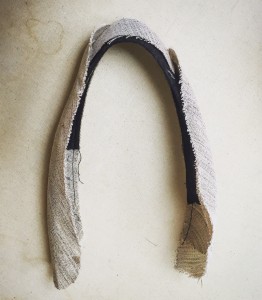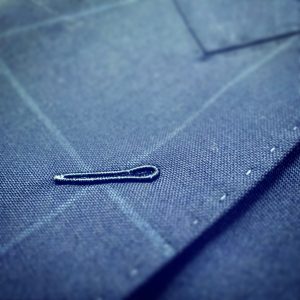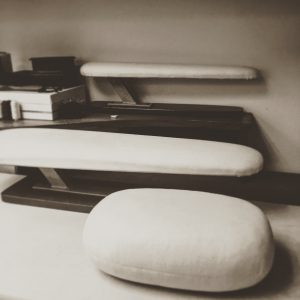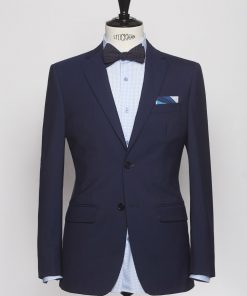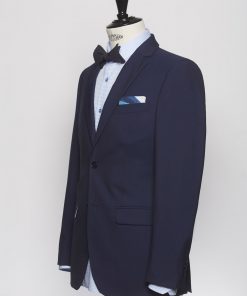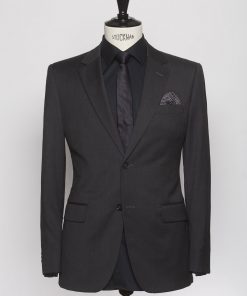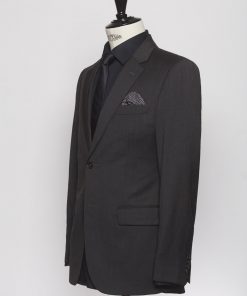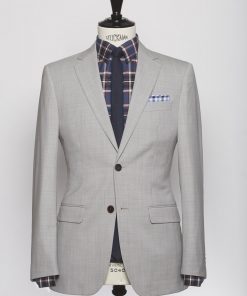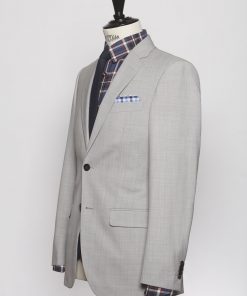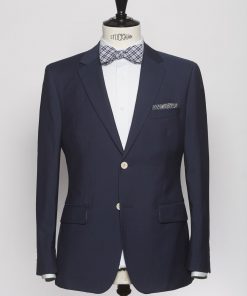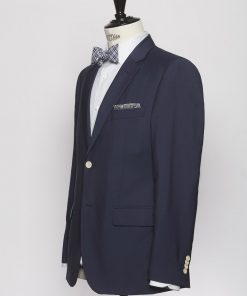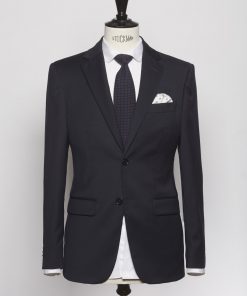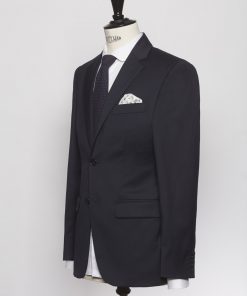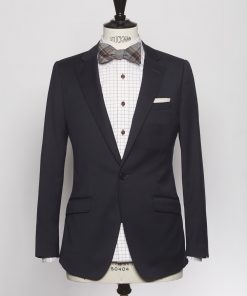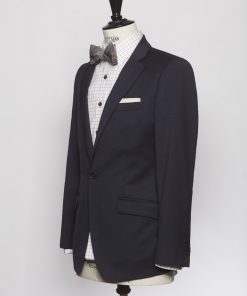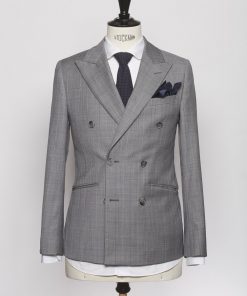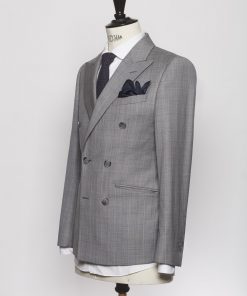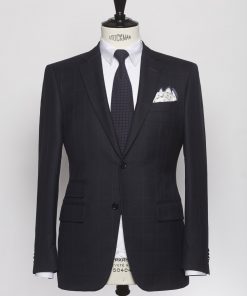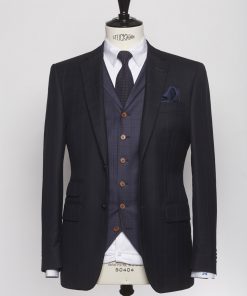Suits of Kloffman
Suits of Kloffman

Before Cut
Fabrics have her own properties and different shrinkage rate, So in order not to affect the cutting and measurement, we will “rest” the fabrics in our fabrics room and let it absorb and shrink before the cut. This process usually take 1 – 2 days. A shrink percentage test result would be taken to the consideration of pattern layout on the fabric.
Pattern Making
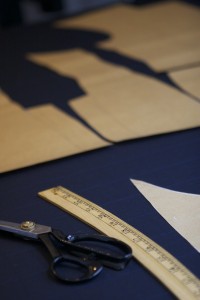
We have our own principle on pattern for both Bespoke or Made to Measure. In Bespoke tailoring we are more deep into develop a unique personal pattern based on your posture and personal preferences. This pattern are made after the meeting and consultation between you and our cutter. During the consultation our cutter will take your measurement, study your shape, providing you the suggestions on your new suit based on your personality and needs. Beside the bespoke tailoring, we also provide a Made to Measure suit. Your posture and measurement will be applied to our in house pattern, the house pattern will be revised and renew every one to two year based on the trend and design.
Cutting the fabric
There are few more steps before the cut of the fabric, for example the grain alignment – Our cutter will align the fabric grain and make sure it is straight, only a straight grain can deliver a natural drape; After the alignment, our cutter will steam pressed every inches of the fabrics in order to preshrunk it. Our experienced cutter will handle the fabric with the best tailor’s shears, so the fabric will not be disrupted during the cutting.
Trims Preparation
The canvas must be soaked in cold water and steam pressed, the tapes and pocketing fabrics are also needed to be preshrunk by steam press process.
A Pre-Sew Ironing
After cut the fabric into pieces, it is important to shape the fabrics before sewing or applying the canvases, we will apply a traditional ironing technique to shape the fabrics. This ironing work is one of the most important process from traditional tailoring, and which cannot be replaced by machine. This process requires experiences and techniques from tailors, who has a good hand feel on fabric and can carefully handle with the heat, steam and pressure from the iron. The tailors will apply different ironing technique such as Stretch, Shrink and Press to different part of the jacket piece in order to form a 3D shape instead of a flat surface. For example, the tailor will shrink the chest area in order to create the volume for the chest, so the fabric will naturally cover the chest and make sure no excessive fabrics surrounding the chest area. The Pre-sew ironing is a long process, and have been neglected by many suit makers nowadays. however, it is essential, and it will make the jacket fit much more comfortable to the customer’s body.
Darts
We apply different style of darts according to the style of the jacket, and all darts on our suits have to be flatted and align to the fabric grain lines naturally.
Pocketing
The placement and the proportion of the chest and waist pockets are important to the overall balance of the jacket. In our cuts, pockets placement and size will then be designed after knowing the jacket length and body shape. We will apply different interlinings for the pocketing based on the fabric properties. We basically have 3 different interlinings for the pocket from soft to hard.
Making Canvas
The canvas is another important part to form the shape of the jacket. It is, however, to prevent the jacket from stretching and distortion. The canvas are formed by several layers of interfacings, such as the wool canvas and horse hair canvas…etc. The chest piece of the canvas have to be fully padded, and tapes have to be sew on several parts in order to strengthen the shape of the jacket. The canvas have to be made individually based on the chest of the customer and darts on the jacket.
Assembling the Canvas
Since the fabrics have been shaped, and the canvases are made according to the shape, and now it has be basted precisely together. Our tailor will hold the positions of the canvas to the fabric by hand stitches and ensure that the works done in the pre-sew ironing will match to the works done in the canvasing.
Lapel
We do not just padded the lapel, moreover, we apply different padding styles, directions and tensions on one single lapel in order to made it life. A good Lapel has to be naturally rolled, and only a padded lapel can deliver the result.
Shoulders
Depends on the styles, the shoulder pad have to be custom made for every single jacket based on the jacket style: from well-structural to nature drape. Depends on style, we will padded the shoulder pads, or even adding canvas into it.
Taping
Our suit is fully tapped, from neck, shoulders, armholes, lapel roll lines, lapels and all the way down from the edges of the jacket to the bottom. The taping must be done according to the shape of the jacket, different tension of tape may affect the shape of the jacket.
Attaching the Facing
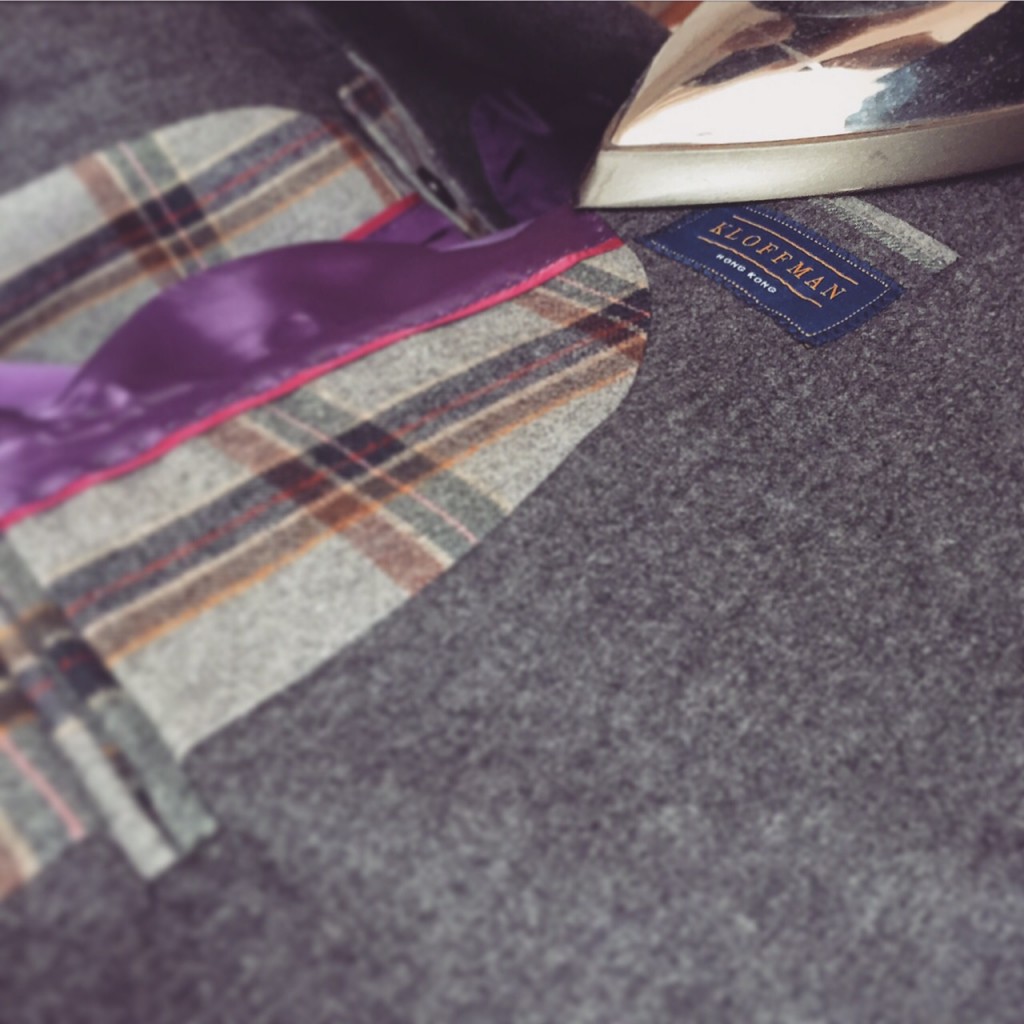
The cutting of the facing is totally according to the front piece of the jacket. A good facing should always provide a better looks on lapel, and ensure the jacket body curve inward naturally. After attached the facing, the tailors have to trim the edge of the facing in order to deliver a flatter look on the edge of the jacket. We have apply an exclusive technique on our facing – The Beau facing, which is further ensure the shape and the drape of the jacket.
Mid Ironing
After basting the canvases and interlinings on the fabrics, the basic shape of the jacket have been form, and we go into a mid-ironing to ensure the shape is correct and nothing distorted before hemming the jacket together.
Lining
The lining should be cut to against pulling friction when sliding the jacket on and off. All seams of the lining, have to been unseen. Our suit can be finished in full lined, half lined or without lining.
Sleeve Hemming
Sleeve is one of the significance of good suit. The sleeve require to be shaped by ironing work before sewing in together, for instance, shrinking the sleeve cap. The sleeve have to be drape elegantly and naturally without wrinkle and it should form a 3D barrel shape after hemmed. One more important parts of the sleeve is the shape of the sleeve cap, it is generally decided by the sleeve cap interlining(support).Since the sleeve cap style depends on the jacket style, therefore we custom made every single sleeve cap based on the style of the jacket, and size of the armhole.
Collar
The collar consisted with several tailoring processes: cutting, padding, and ironing. The length of the collar have to be perfect to the neck of the jacket as well as to the gorge line, slight too long or too short will affect the whole jacket. the collar have to be fully padded by stitches and after that our tailors will stretch the fabric for the collar for getting its curve to the neck and shoulder shape.
Button Holes
Button holes are one of the important part to tell quality. A hand-made buttonholes are a delight for bespoke tailoring, however, a very high stitch density machine-made buttonholes deliver a grace to luxury menswear too. All Kloffman’s suits are crafted in functional buttonholes on cuffs, to made it exclusive, we recommend a Milanese buttonholes
Final Pressing
Final Pressing is done before the buttoning, because buttons may create obstacle when ironing. A fine cloth needed to be apply for the pressing between the iron and the jacket in order not to damage the shell fabric. Different parts of jacket require a different method or way of pressing, and each part ,for example: chests, lapels, shoulders and sleeve may require different tool such as the ironing broad and cushion to complete the final pressing.
Buttons
Lastly, the buttoning. All buttons on our suits are sew with shank and double strand. The double strand provide a double protection from thread weakening, and make it more durable.
Discover More